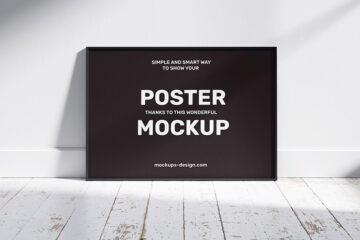In the ever-evolving realm of graphic design, precision and accuracy are paramount. As designers strive to bring their visions to life, the importance of realistic mockups cannot be overstated. When it comes to larger-than-life canvases, such as billboards, the need for meticulous attention to detail becomes even more crucial. In this blog post, we delve into the significance of Billboard Mockups for graphic designers, focusing specifically on the pivotal aspect of “Dimensional Adaptations.”



Billboard Mockups serve as invaluable tools for graphic designers, providing a tangible platform to visualize their creations in a real-world context. These mockups simulate the final product, allowing designers to assess the impact of their designs on a grand scale. However, the road to a visually compelling billboard design involves more than just creating stunning graphics; it requires a keen understanding of dimensional adjustments.
The Challenge of Billboards’ Varying Dimensions
Unlike digital platforms where designers work within fixed pixel dimensions, billboards come in a myriad of sizes and proportions. From towering highway billboards to smaller urban displays, each canvas demands unique considerations. Graphic designers must grapple with the challenge of adapting their designs to these varying dimensions without compromising visual integrity.
Importance of Dimensional Accuracy
The success of a billboard campaign hinges on its ability to capture attention and convey the intended message effectively. Dimensional accuracy ensures that the design translates seamlessly across diverse billboard sizes, maintaining its visual impact. A well-executed dimensional adaptation ensures that the design does not appear distorted or lose its intended proportions when scaled up or down.
Utilizing Billboard Mockups for Dimensional Testing
Billboard Mockups offer a lifelike preview of how a design will appear in the physical world. Designers can use these mockups to assess the effectiveness of their creations across different billboard sizes. By overlaying the design on various mockup templates, designers gain insights into how well the visuals harmonize with the chosen dimensions. This process allows for iterative adjustments until the perfect balance is achieved.
Practical Tips for Dimensional Adaptations
Maintain Visual Hierarchy: Ensure that key elements of the design remain prominent across different sizes. This may involve resizing, repositioning, or adjusting font sizes to maintain a clear visual hierarchy.
Simplify Complex Designs: Elaborate details might be lost when scaled up, leading to a cluttered appearance. Simplify intricate elements, focusing on the core message to enhance visibility and legibility.
Test Readability: Text elements play a pivotal role in billboard communication. Test the readability of text at various distances to guarantee that the message is easily comprehensible to the target audience.
Conclusion
In the world of graphic design, adaptability is a hallmark of excellence. Billboard Mockups serve as indispensable tools for designers, offering a realistic preview of their creations. Dimensional adaptations are a key component in ensuring that designs resonate across diverse billboard sizes. By embracing the challenges posed by varying dimensions and leveraging the capabilities of Billboard Mockups, graphic designers can elevate their work to new heights, delivering visually stunning and impactful billboard campaigns.
| Author | Mockups Design |
| File Type | .psd |
| Layered | Yes |
| Smart-Object | Yes |
| License | Commercial Use |







